
For a long time, fat has had the reputation of only being bad and capable of “destroying our health.” Any food that was considered high-fat was an automatic no-go for those who were trying to diet or eat healthily. Yet, the 1990s low-fat diet fad failed when it came to solving numerous health problems, so people turned to other diets, like Atkins, South Beach, and keto, and foods high in fat and low in carbs became more acceptable.
Though some of these high-fat and low-carb diets have their own issues, experts have since come around to recommend balanced eating plans that include enough of the nutrients we need to live better. The good news here is that fat has always been part of a well-balanced eating plan; the quality and source of the fats consumed are where the real question lies.
The better news is that diets with high-fat, low-carb foods, referred to as the keto diet, have been proven to help attain specific fitness goals. In addition, increasing unsaturated fats while reducing carbohydrates has been shown to help with weight loss and maintenance while increasing mental functioning and elevating energy levels. All of this demonstrates that fat is an integral part of a healthy lifestyle.

Who should follow a high-fat, low-carb diet?
If your goal is to lose fat and control your weight through diet and exercise, a high-fat, low-carb diet like keto may be the right choice for you. Increasing your fat intake and reducing your carbs effectively retrains your metabolism to burn fat directly as energy through a process called ketosis.
There is evidence showing that individuals with epilepsy, type 2 diabetes, and other systemic diseases may benefit from the keto diet, though medical and scientific research thus far has produced mixed data on keto’s overall health benefits. It’s important to know that you may experience physical discomfort as your body shifts to a high-fat, low-carb diet. These effects should be short-lived, but make sure to consult with your physician before altering your eating habits in any drastic fashion to make sure you’re on the best dietary path for your specific needs.
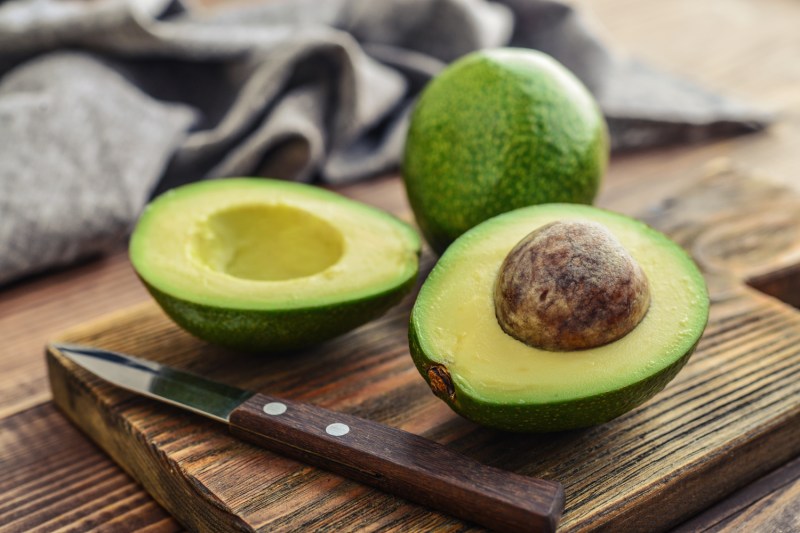
Here are 11 healthy high-fat and low-carb foods
When it comes to choosing high-fat, low-carb foods to include in your diet, there’s a variety of delicious options. In fact, you may already be eating some. By combining a few into a single meal or an overall eating plan, you can maximize their benefits. Some of the best healthful high-fat food choices are listed below, with the nutritional information of an average serving listed to help you choose the right ones for you.
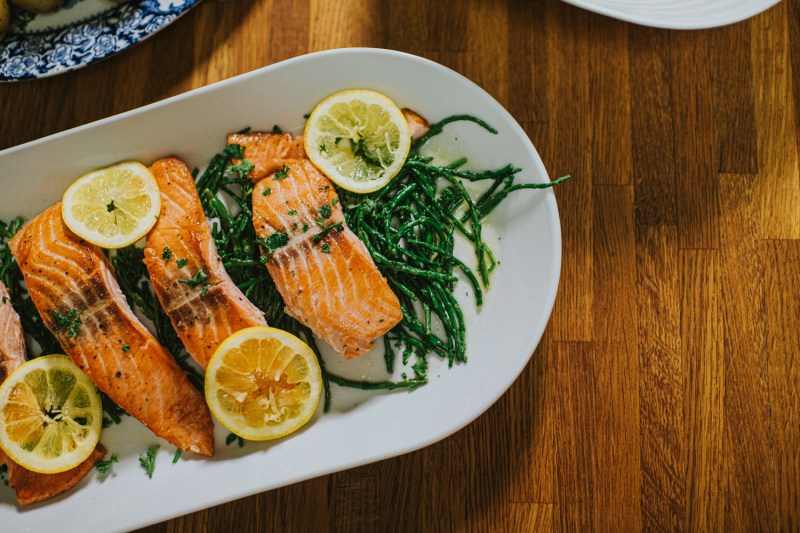
1. Salmon
Thanks to a high concentration of omega-3 fatty acids, salmon is one of the most desirable high-fat foods for heart and brain health. In addition to increasing your fats for fitness and body weight goals, you’ll be protecting vital blood vessels that keep your blood oxygenated and perpetuate energy. Fresh salmon is your best bet, but canned salmon carries similar health benefits and makes it easy to keep on hand. All it takes to reap the benefits is eating 4- to 6-ounce portions at least twice per week.
Nutritional Information
- Calories: 280
- Fat: 15 grams
- Carbs: 1 gram
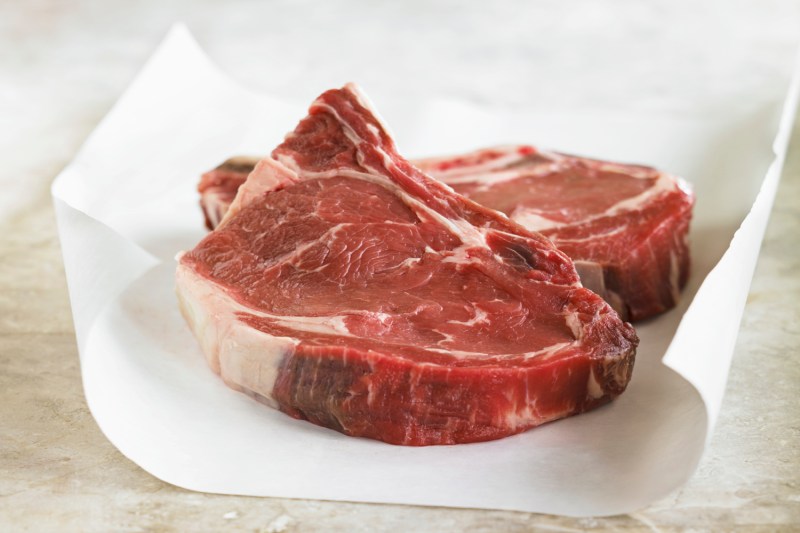
2. Beef
When you include high-quality beef in your high-fat, low-carb diet, you also add iron, niacin, and other essential nutrients to your daily intake. Depending on the cut, you can find marbled beef that includes more fat; rib cuts contain striations that indicate a higher fat content than leaner cuts.
Nutritional Information
- Calories: 100
- Fat: 5 grams
- Carbs: 1 gram

3. Steak
Strip steak, ribeye, skirt steaks — all of these are ideal cuts of steak when increasing the fat in your diet. Though the fat content in steak can vary wildly depending on the cut, you can always find a high-fat steak to satisfy your requirements. Though it’s a delicious option on its own, you can experiment with adding steak to other recipes and including certain sauces and toppings to optimize your fat intake. You’ll have a broader range of possibilities at mealtime without compromising your high-fat, low-carb diet goals.
Nutritional Information
- Calories: 190
- Fat: 10 grams
- Carbs: 0 grams
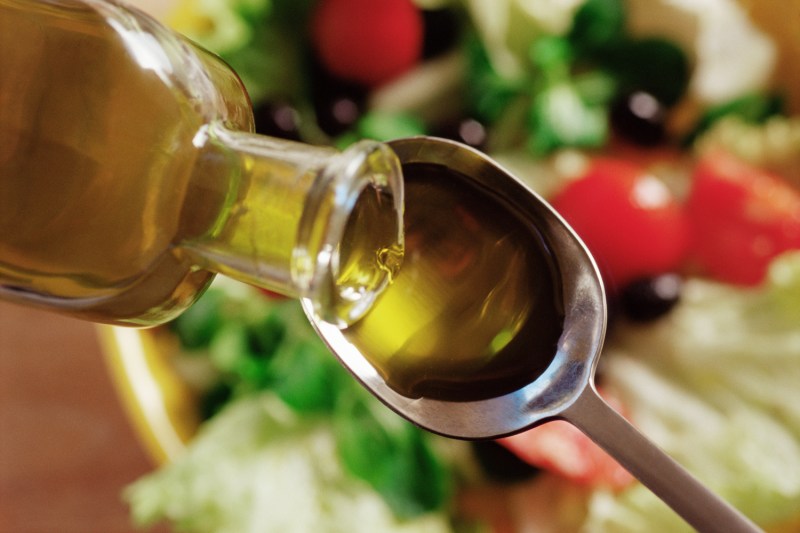
4. Olive oil
Olive oil, especially extra-virgin olive oil, is considered one of the healthiest and least-processed cooking oil you can use. It’s high in vitamins E and K as well, so you can count on more nutrients than are found in simpler oils like canola or corn. Olive oil has a nutty flavor, even when eaten raw, so it’s perfect for dressings, marinades, and sauces to top the other components of your high-fat diet. One tablespoon is all it takes to pack in a whopping 14 grams of healthy fats!
Nutritional Information
- Calories: 120
- Fat: 14 grams
- Carbs: 0 grams
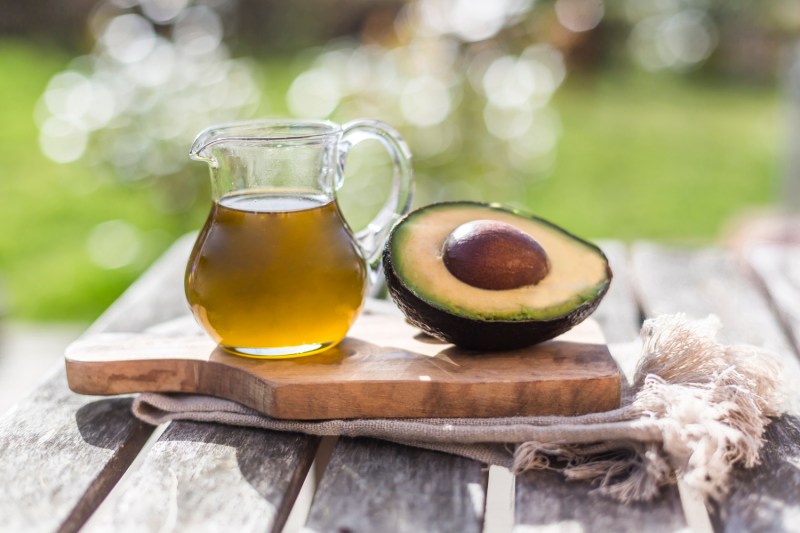
5. Avocado oil
Avocado oil is another healthy option for using oil to maximize your fat consumption. It’s low in saturated fat and high in oleic acid, which has been shown in studies to help regulate body weight. It can also help control cholesterol levels and contains the antioxidant lutein, which is helpful with protecting eye health. A single tablespoon provides an incredible 14 grams of healthy fat. However, be cautious of the high omega-6 fatty acid content in avocado oil because it can cause stomach upset.
Nutritional Information
- Calories: 124
- Fat: 14 grams
- Carbs: 0 grams

6. Avocados
It’s always best to get your healthy fats from whole foods, and few whole foods are a better source than avocados. Not only are they buttery and mild-tasting, but they’re also versatile ingredients that can be blended with other high-in-healthy-fat foods to make delicious dishes. One-half to one medium-sized avocado is the perfect daily serving size for benefiting from the healthy fat content. A single medium-sized avocado provides the macros listed below.
Nutritional Information
- Calories: 240
- Fat: 22 grams
- Carbs: 13 grams
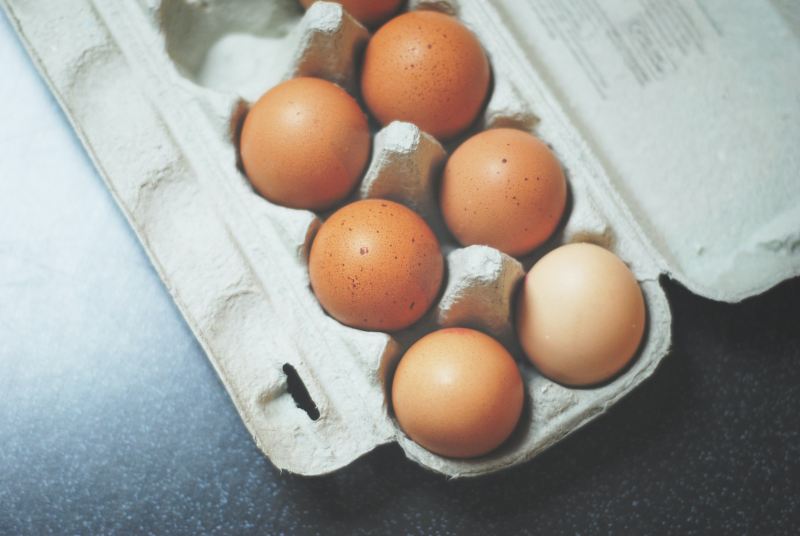
7. Eggs
Eggs are widely considered to be one of nature’s perfect healthy foods. They contain a balance of protein, fat, minerals, and carotenoids that can bolster your immunity. And, of course, they’re easily prepared in many forms — everything from a quick breakfast scramble to a delicious quiche loaded with low-carb veggies and other high-fat protein ingredients. One large egg contains the nutrients shown, which makes them perfect for multi-egg dishes.
Nutritional Information
- Calories: 72
- Fat: 5 grams
- Carbs: 0 grams
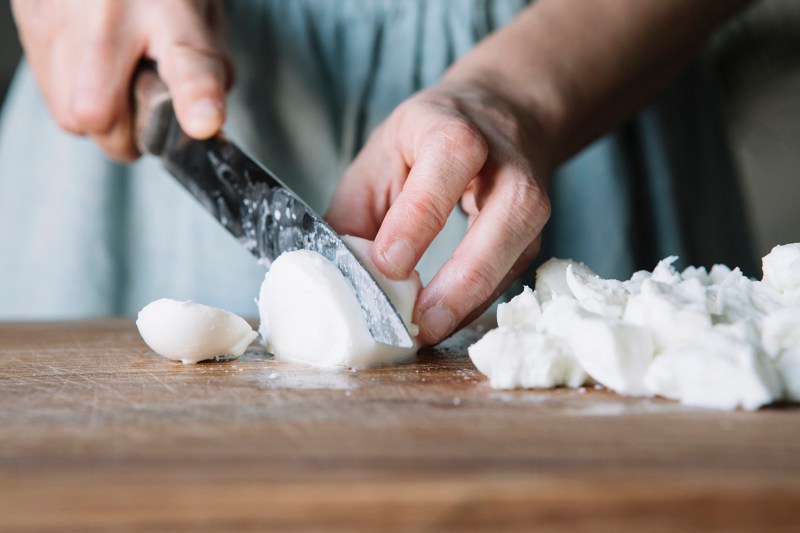
8. Mozzarella cheese
Traditionally made from buffalo milk, mozzarella is a mild-tasting Italian cheese that carries calcium and protein in addition to 11 grams of fat for a single 50-gram serving. It also contains biotin, zinc, and potassium, all of which contribute to excellent overall health. In addition, its mild flavor makes it a great blend with other high-fat foods or eaten as a snack, and string cheese is actually mozzarella.
Nutritional Information
- Calories: 152
- Fat: 11 grams
- Carbs: 0 grams
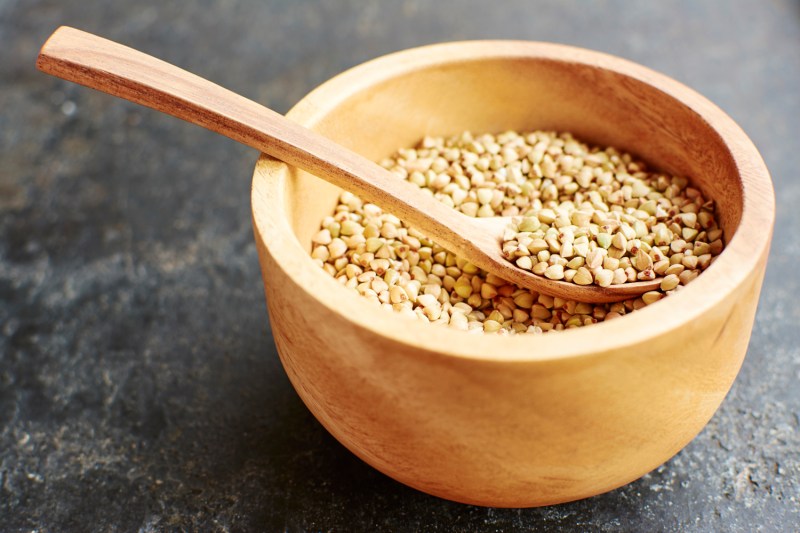
9. Hemp seeds
Hemp seeds are a nutritional wonder food culled from the cannabis plant, but they have so little THC present that they’re safe to eat with virtually zero risk of “getting high.” They’re an excellent source of healthy omega-3 fatty acids, along with the unsaturated fat and protein a high-fat, low-carb diet calls for. Hemp seeds also have high fiber and mineral content, and they can help in reducing inflammation. Use them as you would with nuts or other seeds, and try adding them to smoothies and healthy low-carb salads. A serving of three tablespoons provides the following.
Nutritional Information
- Calories: 180
- Fat: 15 grams
- Carbs: 1 gram
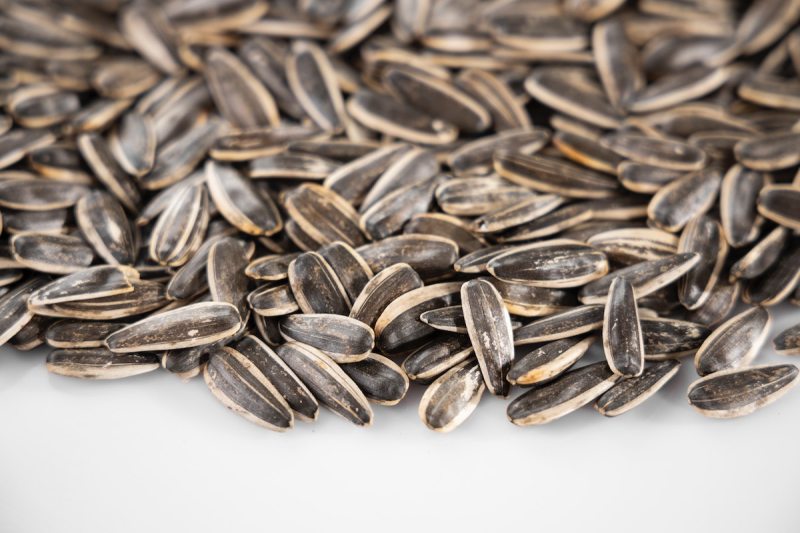
10. Sunflower seeds
Sunflower seeds have been eaten on their own as an easy snack for generations. Their nutty flavor is a welcome addition to all sorts of recipes, from savory to sweet, and their nutritional content is off the charts — rich in healthy fats, folate, pantothenic acid, copper, manganese, and much more. You can easily add a 50-gram serving to your daily diet and reap the high-fat benefits of this trusted nutritional powerhouse.
Nutritional Information:
- Calories: 300
- Fat: 26 grams
- Carbs: 11 grams
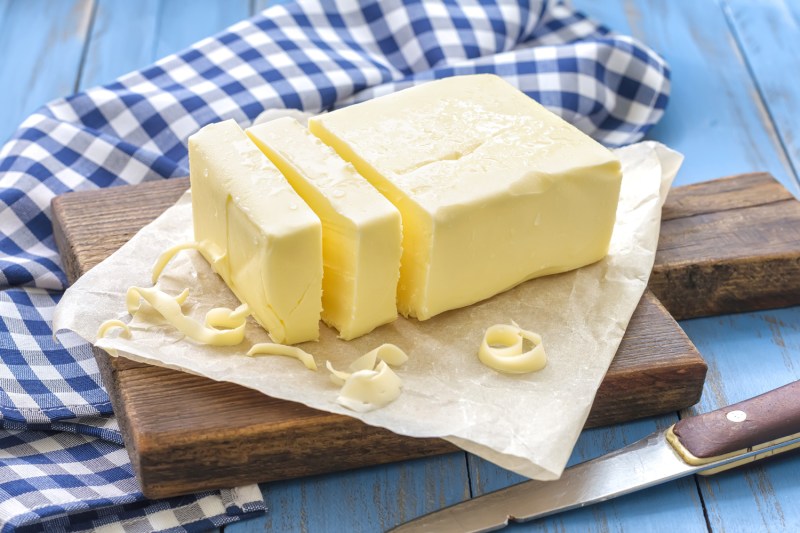
11. Butter
Butter has been maligned over the years as a source of unhealthy fat. However, recent findings have determined that as long as it’s eaten in moderation, butter can be a valuable part of a high-fat, low-carb diet. The calcium found in butter helps with bone strength, vitamin A offers benefits to skin health, and vitamin E supports a healthy heart and acts as an antioxidant to keep cells in check. When used as a spread or added to recipes, a 1-tablespoon serving contains the following nutrients to make a high-fat, low-carb diet rich and flavorful.
Nutritional Information
- Calories: 100
- Fat: 11 grams
- Carbs: 0 grams

Fat doesn’t have to be bad for you: It’s all about balance
If you’ve come to believe that eating a healthy diet means removing fat from the menu, rejoice in knowing that fat is once more a welcome addition to your daily nutritional needs! If you opt for a diet high in fat and low in carbs, try combining your high-fat options with high-protein options for balance.
Many high-fat foods are high in protein as well, which makes it even easier to get your daily allotted macros in every meal. As always, remember to discuss your diet and your health goals with your physician for the most beneficial results possible. When followed properly, a high-fat, low-carb diet may be just the thing for you!

Tips for eating a high-fat, low-carb diet
- Choose healthy fats over unhealthy fats. Focus on monounsaturated and polyunsaturated fats, such as those found in olive oil, avocados, and nuts. Limit your intake of saturated fats, such as those found in processed foods and fried foods.
- Eat plenty of protein. Protein helps you feel full and satisfied, which can help you stick to your low-carb diet.
- Don’t be afraid to eat vegetables. Vegetables are a good source of nutrients and fiber, and you can enjoy them on a low-carb diet, as long as you choose low-carb vegetables like leafy greens, broccoli, and cauliflower.
- Drink plenty of water. Water is essential for good health and can help you feel full and satisfied. No matter what kind of diet you’re on, drinking lots of water is a must.
For info on how to spice up your meal plan, check out this yummy challah recipe, these delicious fall superfood recipes, and this timely reminder not to “season” your food with sleep medications. However you decide to change up your at-home menu, we wish you nothing but great meals and good times ahead. Bon appétit!
Editors' Recommendations
- The best snacks for the Mediterranean diet: 9 heathy, tasty ideas
- Healthy grilling ideas: These foods will have you feeling great all summer long
- These 12 healthy foods are among the highest in potassium
- These low carb pasta options are just as delicious
- Chicken pizza crust sounds gross but it’s actually delicious (and keto friendly)



